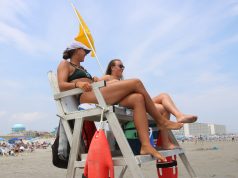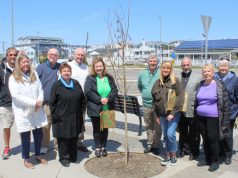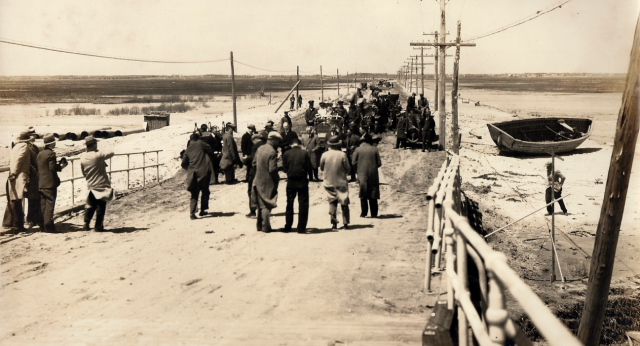
Provided by the Sea Isle City Historical Museum
When the first hunters and fishermen ventured from the county mainland to Ludlam’s Island, they had to slosh through the wetlands and somehow cross over the body of water called “Ludlam’s Thorofare.”
Then in 1880, along came Charles Kline Landis with his dream to convert this wilderness into a Sea Isle City paradise. Within a year, Landis had managed to get the first roadway built to the island.
Progress took over from there. And for the past 80 years, Ludlam’s Island has been served by three (but not the same three) roads with bridges leading to Townsend’s Inlet in the south, downtown Sea Isle in the middle and Strathmere in the north.
Road from the Mainland
That first roadway from the mainland to Sea Isle wasn’t exactly high-tech. It must have provided the thrill of a jarring and sometimes messy ride over the new log-based “Sea Isle Turnpike” – which was under water much of the time.
At first, there was no bridge over the thorofare. Travelers had to use the ferry operated by Roger Dever, who was soon to become, fittingly enough, “Surveyor of Highways.” After a wooden bridge was completed in August of 1881, visitors could travel ferry-less to town and enter at 44th Street.
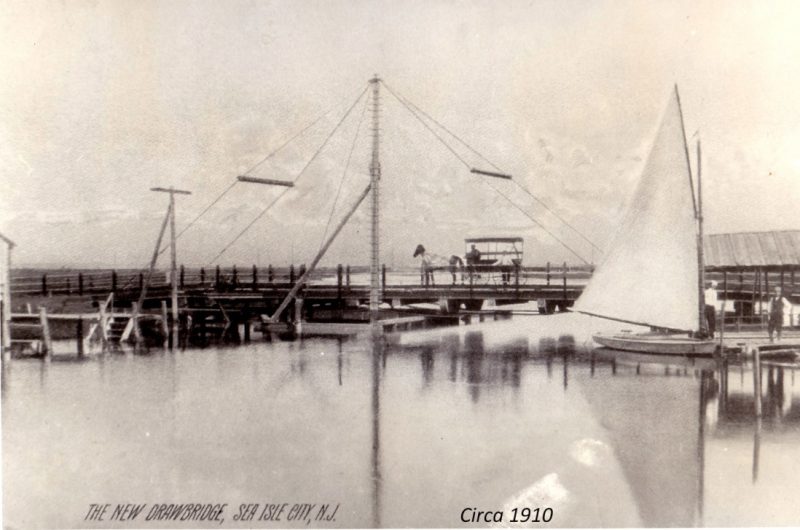
But the motorcar was coming of age. For many, it became the preferred method of family transportation to the shore. Automobiles were bucketing across outdated wagon paths and over bridges too narrow to allow cars going in opposite directions to pass safely. The original turnpike could no longer support such heavyweight progress. An updated roadway, and especially a new bridge, were needed – and the county obliged.
The basic drawbridge withstood Sea Isle’s storms and floods until it was finally done in by the massive nor’easter of March, 1962. It was replaced 20 months later by the current JFK Boulevard span of a height sufficient for boats to pass underneath without the need of a draw. The cost for the new bridge was $1.7 million.
The Ocean Drive
Even in the late 19th century, one could travel all the way along the shore from Cape May to Atlantic City. But there were drawbacks: passengers had to shuffle continually from boat-to-train and back again, the trip could consume most of the day, and people couldn’t pause when and where they wanted. With the advent of the motorcar, a more versatile route became desirable. The county envisioned a continuous highway with bridges to connect the barrier islands – an ocean drive.
Bridges were lacking all along the route. Ludlam’s Island needed spans over both Corson’s and Townsend’s Inlets, a project which would take nearly 50 years to complete.
In the late 1910s, the first vehicle bridge was finally built over Corson’s Inlet despite wartime problems obtaining materials; the railroads were prohibited from transporting such non-essential goods. It entered the island a few blocks south of the Deauville Inn.
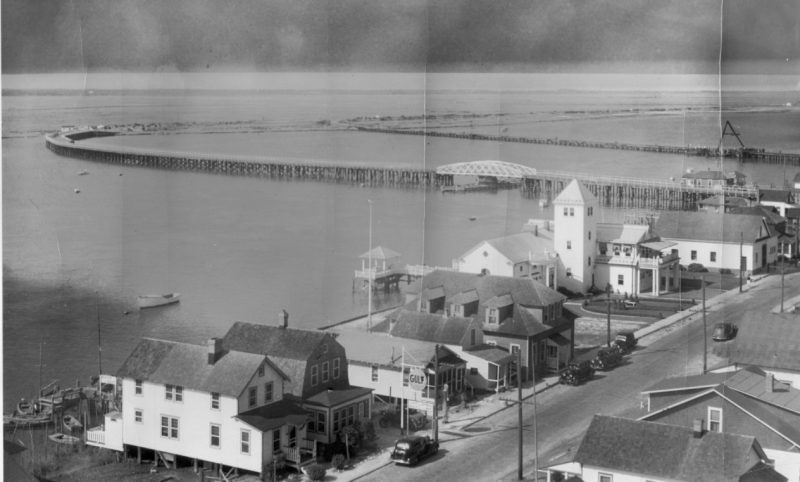
Nothing more was done for 20 years. Then in 1934 the Cape May County Bridge Commission was formed. They immediately implemented a plan to extract funds from the federal government for the construction of the bridges needed to complete the long-awaited Ocean Drive. Government funding was provided with the stipulation that the bridges would be self-sustaining – so each came packaged with its own toll booth.
The first impact on Ludlam’s Island was the construction in 1939-40 of a span over Townsend’s Inlet to connect the island with Avalon. In fact, all the required county bridges were completed in that same time period – with the exception of a replacement bridge over Corson’s Inlet. This last wasn’t absolutely needed at the time, because the 20-year-old original bridge was still in operation. The price tag for the total project was $1.7 million.
The official dedication of the new Ocean Drive highway system took place on June 13, 1940, at the Cape May entrance to the drive. Sea Isle City Mayor G. Fred Cronecker presided at the ceremony. (He also happened to be Chairman of the Bridge Commission.)
A new bridge over Corson’s Inlet was finally completed after World War II. It entered the island north of the original bridge, adjacent to the Deauville Inn.
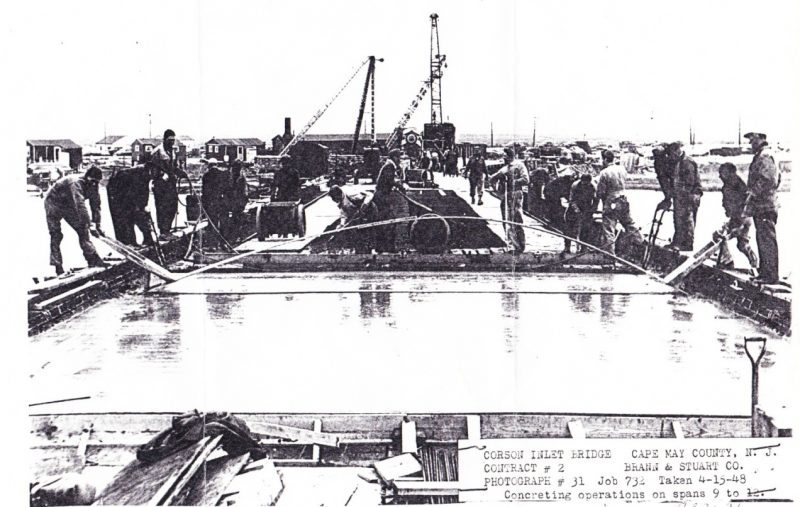
Today
Since the completion of this last span, Ludlam’s Island has had the same three connectors to the island, albeit with numerous repairs and reconstructions – along, of course, with a corresponding increase in expended funds. But being able to drive along the shore from one end of the county to the other seems to trump the cost.
To learn more about Sea Isle’s history, visit the Sea Isle City Historical Museum at 48th Street and Central Avenue. Access the website at www.seaislemuseum.com. Call 609-263-2992 with any questions. Current hours are 10 a.m. to 3 p.m. Monday, Tuesday, Thursday, and Friday.

